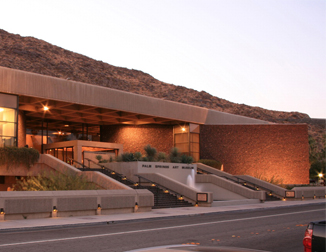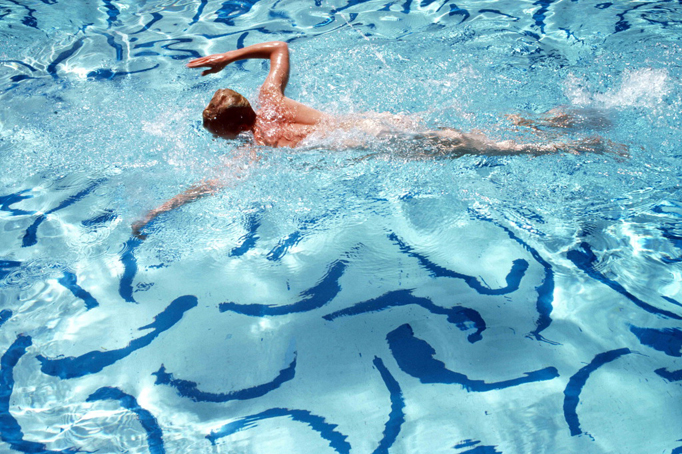
The Hockney Swimmer (1978)
Michael Childers
Michael Childers is widely acclaimed for his portrait, fashion, and fine art photography. A founding photographer for Andy Warhol's Interview magazine, Childers has photographed many of today's cultural celebrities. He has captured the movement of several leading dance companies including the Joffrey Ballet, the Royal Ballet, and the Alvin Ailey Dance Company. With close associates in the art world, Childers took the opportunity to photograph a swimmer in a Los Angeles swimming pool that had been painted by artist David Hockney. The swimmer's motion animates Hockney's free-form blue lines on the bottom of the pool that accentuate the patterns created by rippling water, adding depth and color to the already sun-dappled surface. The Hockney Swimmer embodies the themes of celebrity, privacy, and pleasure, as well as art, landscape, and design, which are explored in the exhibition Backyard Oasis: The Swimming Pool in Southern California Photography, 1945–1982.
Color photograph on Supergloss/Fuji paper, edition 6/6 48 x 72 in
Collection of Michael Childers © Michael Childers

Portrait: John Baldessari with Legs Moustache (1974)
John Baldessari
John Baldessari is among America's most prominent living contemporary artists. He is known for his deadpan humor. This representation of Baldessari’s early photo montages whimsically juxtaposes seemingly unrelated subjects, displaying the artist’s absurdist sense of humor. The upper portion of the image is the artist’s own face. The lower portion is a photograph of a swimmer’s legs, which, because of their position, appear to become the artist’s moustache.
Retouched black-and-white photograph mounted on museum board 20 x 16 in
Collection of the artist © John Baldessari
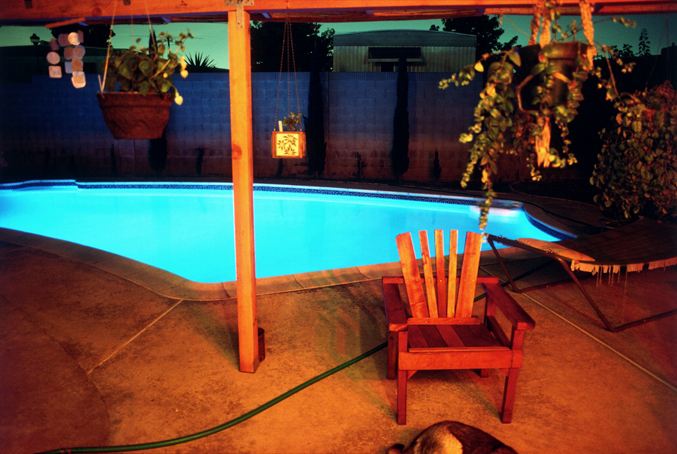
Blue Pool, Orange County (1976)
Jane O'Neal
Jane O'Neal's work is characterized by strong, saturated color and a haunting sense of theatricality, evoked here by the chair, the sleeping dog, the garden hose, and the lit but empty swimming pool.
Cibachrome print 16 x 20 in
Collection ot the artist © Jane L. O'Neal
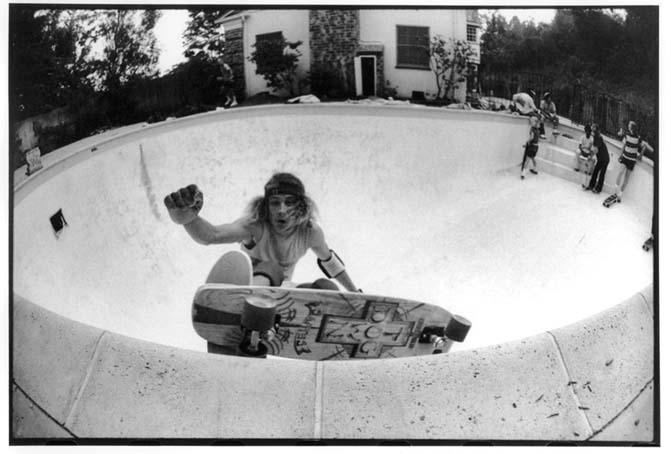
T.A.—Model T Front Side or Transvergence (1973)
Craig Stecyk
Craig Stecyk was born and raised in Southern California, and became indelibly associated with the region's surf and skateboard counterculture when he cofounded Jeff Ho Surfboards and Zephyr Productions in the early 1970s. Stecyk's work and life are documented in the 2001 film Dogtown and Z-Boys, and his work was included in the exhibition Art in the Streets at the Museum of Contemporary Art. In his work, he documents the birth of "guerilla" skateboarding that was fostered by the appearance of empty swimming pools during the Oil Crisis of that decade.
Gelatin silver print 8 x 10 in
Collection of Craig R. Stecyk III © Craig R. Stecyk III

Kaufmann House, Richard Neutra, 1946 (1947)
Julius Shulman
Gelatin silver print 30 x 40 in
Collection of Palm Springs Art Museum © J. Paul Getty Trust. Used with permission. Julius Shulman Photography Archive Research Library at the Getty Research Institute
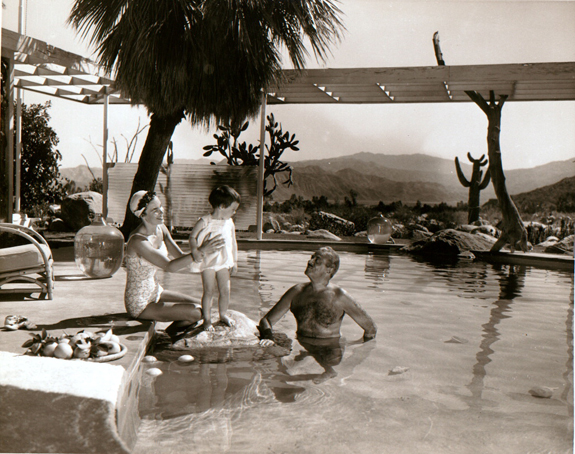
Raymond Loewy House, Palm Springs, California (1957)
Bill Anderson
Gelatin silver print 8 x 10 in
Collection of Palm Springs Art Museum, gift of Dorothy Anderson © Palm Springs Art Museum
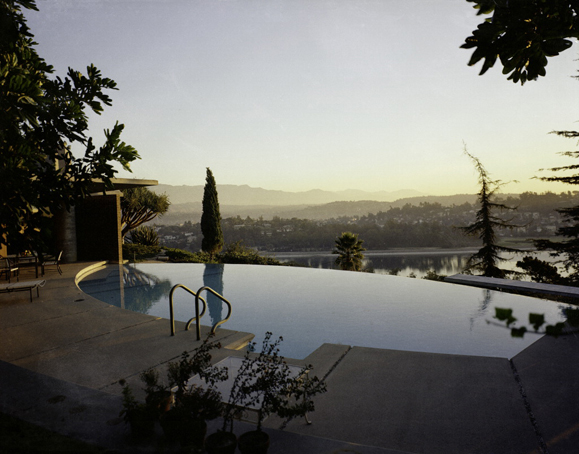
Silvertop - Hollywood Dawn (1972)
Leland Lee
Leland Y. Lee was a student of and studio assistant to acclaimed architectural photographer Julius Shulman. At age 93, Lee continues to create photographic documents of Southern California buildings. This image from the early 1970s represents the swimming pool of one of architect John Lautner’s most famous residences designed in the 1950s, often called “Silvertop” because of its location high above Silver Lake in Los Angeles. This color photograph was taken shortly after sunrise and dramatically depicts the innovative “infinity” pool and the surrounding garden designed by landscape architect Garrett Eckbo. The crisp, silvery edge of the pool water contrasts with the darker, still-shadowed lake water below.
Modern pigment Archival pigment print from Ektachrome transparency 17 1/4 x 22 in
Courtesy Michael H. Lord Gallery, Palm Springs © Leland Y. Lee
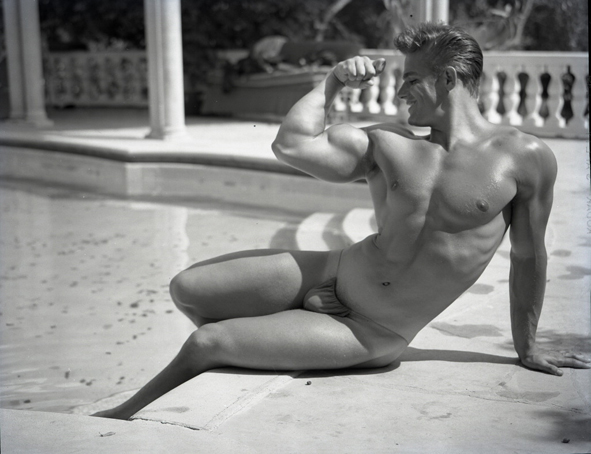
Richard Dubois (1955)
Bob Mizer
Gelatin silver print 8 x 10 in
Collection of Athletic Model Guild © Athletic Model Guild

Orange Umbrella, The Motel Series, Desert Hot Springs, California (1981)
Loretta Ayeroff
Color photograph, R-type 16 x 20 in
Collection of Coy Howard © Loretta Ayeroff

Hockney Painted This Pool (1980)
Bill Owens
Chromogenic development print 39 3/4 x 31 1/2 in
Collection Los Angeles County Museum of Art, Gift of Bruce Berman and Nancy Berman © Bill Owens

Olivia de Havilland at Her Beverly Hills Residence (1945)
Maynard Parker
Modern print from original negative 16 x 20 in
Maynard Parker Archives, The Huntington Library © The Huntington Library, Art Collections, and Botanical Gardens, San Marino, California
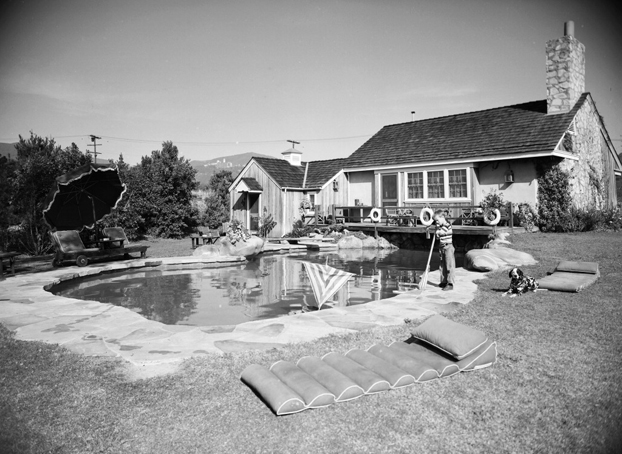
Henry Fonda's Backyard Pool, Los Angeles (1948)
Maynard Parker
Modern print from original negative 16 x 20 in
Maynard Parker Archives, The Huntington Library © The Huntington Library, Art Collections, and Botanical Gardens, San Marino, California
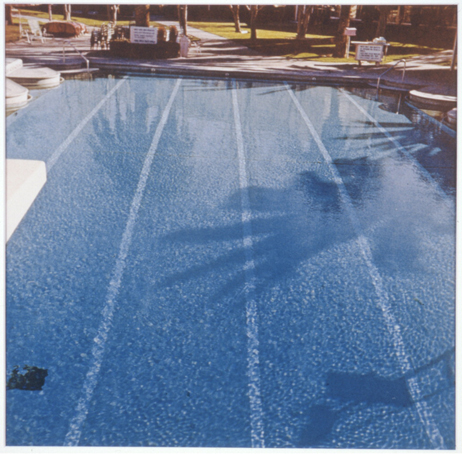
Nine Swimming Pools (1968)
Ed Ruscha
Color photograph on Kodak professional paper 26 x 21 1/2 in
Courtesy Ed Ruscha Studio © Ed Ruscha
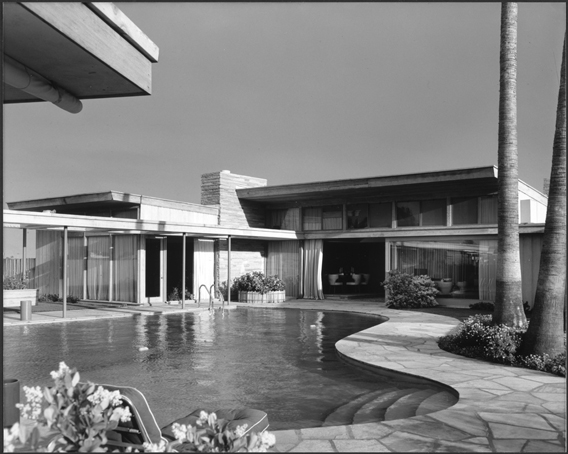
Sinatra House, E. Stewart Williams, Architect (1948)
Julius Shulman
Gelatin silver print 16 x 20 in
Collection of Palm Springs Art Museum © J. Paul Getty Trust. Used with permission. Julius Shulman Photography Archive Research Library at the Getty Research Institute


